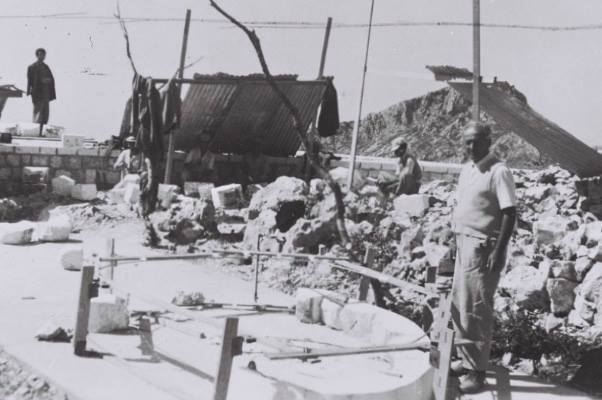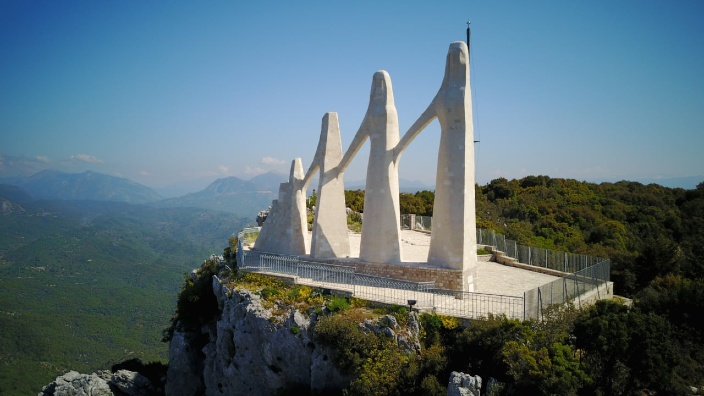The Monument of Zalongo, which stands proudly on Mount Zalongo, Western Greece, has been designated by the Greek Ministry of Culture as a Monument of Modern Cultural Heritage of Greece.
The monument was designed by famous Greek sculptor, George Zongolopoulos, to commemorate the mass suicide of women and children which occurred in 1803, called the “Dance of Zalongo.”
The news of its status comes as the monument celebrates its 60th anniversary this year, and Greece also marks the bicentenary of the Greek Revolution.
What is the Monument of Zalongo?
The Monument of Zalongo was executed under the supervision of George Zongolopoulos, the architect, Patroklos Karantinos, and the marble craftsman, Eleftherios Gyftopoulos, inside the archeological site of Kassopi.

The monument itself took six years to construct, from 1954 to 1960. At the beginning of the project, Zongolopoulos built a lift to transport materials up the mountain, but safety concerns meant that this mechanism was replaced by more old-school human and animal labour.
The monument itself is 13 meters high, almost the same height as a five story building. The interior of the sculpture is made of concrete, while the outer shell was constructed using 4,300 off-white limestone blocks which were mined from a quarry 160 kilometers from the monument’s construction site.
The female figures do not represent well-known historical figures, but were intentionally left without specific characteristics.
George Zongolopoulos Foundation campaigns for recognition:
The George Zongolopoulos Foundation, established in 2004, works to preserve and represent Zongolopoulos’ famous sculptures.

In August 2020, the foundation petitioned to have the monument recognised as a cultural heritage site in Greece and in a statement they say they are pleased by the recent news.
“The characterisation of the sculpture… by the Ministry of Culture and Sports as a Monument of Modern Cultural Heritage of Greece, is a justification for the great Greek artist, George Zongolopoulos, and recognition of the artistic value of the monument itself,” President of the Foundation and nephew of George Zongolopoulos, Nicos Theodoridis, said.
“It is also a recognition of the contribution of the Greek woman, the heroic woman who fought and sacrificed side by side with their husbands and sons.”
It is clear the breathtaking monument deserves this status as despite its difficult position, 30,000 to 35,000 people visit it a year.

